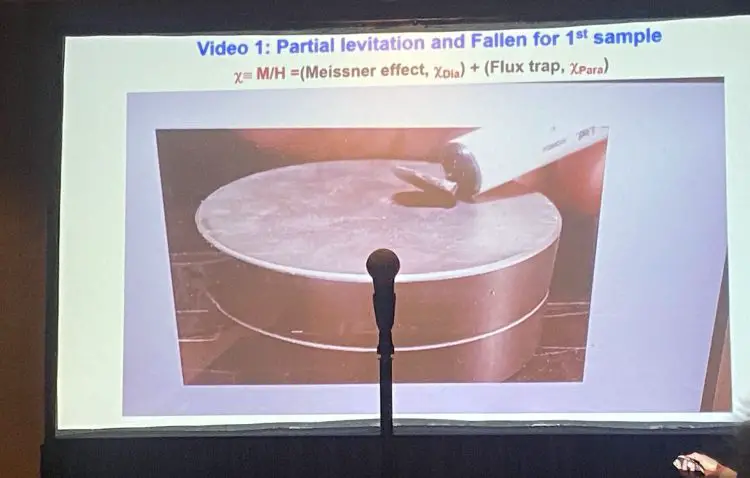Exciting breakthroughs often begin with presentations like the recent LK-99 APS gathering. Here, scientists shared fascinating discoveries suggesting that LK-99 might be a room-temperature superconductor. They showed experiments where they could move LK-99 samples with tweezers and videos of magnets floating above LK-99. But are these findings believable?
What was the LK-99 APS presentation about?
During the LK-99 APS presentation, scientists shared exciting findings suggesting that LK-99 might be a room-temperature superconductor. They showed experiments where they could move LK-99 samples around using tweezers, something unusual for superconductors. They also showed videos of magnets floating above LK-99, which is a sign of superconductivity.
HT Kim #APSMarch pic.twitter.com/hdqFDgBICR
— Victoria Merriman (@vikmez) March 4, 2024
Whether these findings are believable is still up for debate among scientists. It’s a big deal because superconductors usually only work at very low temperatures. The key to deciding if LK-99 is the real deal lies in other scientists trying to repeat these experiments and see if they get the same results. Additionally, the results need to be published in scientific journals and reviewed by other experts to make sure they’re reliable.
Quick reminder: When LK_99 was first announced, CMTC said, “LK-99 is not a superconductor.” Click here and learn why.
In simpler terms, while the LK-99 presentation was exciting, scientists need to double-check everything to be sure it’s true. If it is, it could change a lot of things in science and technology!
Why is the LK-99 APS presentation important?
The potential discovery of a room-temperature superconductor like LK-99 is important for a few reasons. First off, it could make our electricity systems much better. Superconductors can carry electricity without losing any energy, so if LK-99 works at room temperature, it could mean cheaper and more efficient power for everyone.
It’s not just about electricity, though. This discovery could also lead to some really cool new inventions. Imagine trains that go super-fast and use way less energy or computers that are faster and don’t overheat as much. Plus, it could make important medical tests like MRI scans more affordable and available to more people, which would be a huge win for healthcare.
And let’s not forget about the environment. Room-temperature superconductors could help us use renewable energy sources like solar and wind power more effectively, which would be a big help in fighting climate change.

On top of all that, finding a room-temperature superconductor could teach us a lot of new things about how the universe works. It might lead to new discoveries and technologies that we haven’t even thought of yet!
But we’ve got to be careful and ensure that LK-99 and other materials like it are what scientists think they are. That means doing lots of tests and having other experts check the results to be sure. If it pans out, though, it could change the world in some really amazing ways.
So, is the LK-99 APS presentation past the test?
The LK-99 APS presentation didn’t definitively prove that LK-99 is a room-temperature superconductor. Instead, it showcased some intriguing experiments and observations that suggest the possibility.
8) The talk did not bring so much new information 😞. I was expecting that the presenter will bring the magnet 🧲 and the sample to show it to the audience live. The whole thing remains highly speculative and imo improbable.
— Petr Čermák (@petrscience) March 4, 2024
Further research and validation are needed to confirm whether LK-99 truly behaves as a superconductor at room temperature.
What is room-temperature superconductor?
A room-temperature superconductor refers to a material that exhibits superconducting properties at relatively higher temperatures, typically around or near room temperature (20-25 degrees Celsius or 68-77 degrees Fahrenheit). Superconductors are materials that can conduct electricity without resistance when cooled below a critical temperature. Traditionally, superconductivity has been observed at very low temperatures close to absolute zero (-273.15 degrees Celsius or -459.67 degrees Fahrenheit).
The discovery of a material that remains superconducting at higher temperatures has the potential to revolutionize various fields, from energy transmission to healthcare, by enabling more practical and efficient applications of superconductivity.
Featured image credit: Victoria Merriman/X





